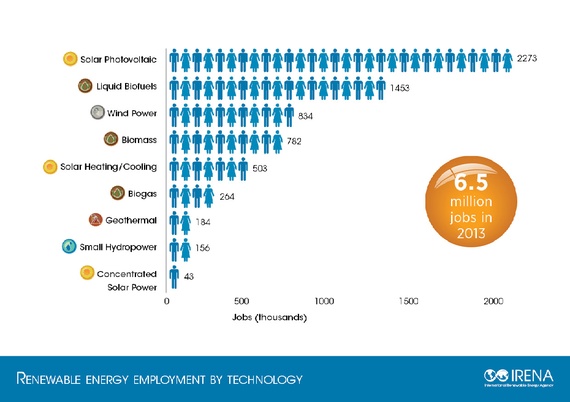Why Green Jobs Are Booming in Bangladesh
May 14, 2014 - Todd Woody - theatlantic.com
The impoverished nation is going solar in a big
way.

Bangladesh is known for its apparel manufacturing industry—and for the
conditions faced by garment workers toiling in Dickensian factories for a dollar
a day. But according to a report released Sunday, the South Asian nation has
become a top hot spot for renewable energy jobs, creating a green workforce
as large as Spain’s in 2013.
How? Solar energy.
Bangladeshi’s are installing small photovoltaic systems at a rate
of 80,000 a month, says the report from the International Renewable Energy
Agency (IRENA). In a country where only 47 percent of the population had
access to electricity in 2009, according to the Asian Development Bank, solar
is increasingly becoming a way to leapfrog the need to build a bigger power
grid.

In the past 10 years, the number of solar systems in Bangladesh has jumped
from 25,000 to 2.8 million, according to IRENA. That in turn has created
some 114,000 jobs, from assembling solar panels to selling, installing
and maintaining them. In fact, the number of solar-related jobs nearly
doubled between 2011 and 2013. “The numbers are set to increase further,” wrote
the report’s authors. (By comparison some 4 million people work in
Bangladesh’s garment industry.)
Solar energy accounted for 2.3 million of the world’s 6.5 million
renewable energy-related jobs in 2013, according to the report. About 70
percent of those solar positions were in China, the biggest green-job generator
with 2.6 million people employed in renewable energy overall.
More than 1.1 million green jobs are in the European Union, an early leader
in promoting carbon-free energy to fight climate change. The United States
came in third with 625,000 renewable energy jobs. Solar, wind and biofuels
accounted for most of those jobs. Wind jobs have risen as more manufacturers
have moved factories to the U.S. On the other hand, those jobs come and
go as Congress allows a key subsidy for wind-generated electricity, the
Production Tax Credit, to periodically expire.

Brazil, however, is a biofuels powerhouse. The country is the world’s
biggest grower of sugarcane, which is used to make ethanol. About 894,000
people were employed in renewable energy jobs in 2013 with about 70 percent
of those positions related to biofuel production.
India employed nearly 400,000 people in green-energy jobs.
“Regional shifts from developed to emerging countries continued
in wind and solar technologies, predominantly in the manufacturing and
installation segments of the value chain,” the report stated.